One of the most interesting birds to watch and to photograph, is the Northern Harrier. In the early morning on the second day, visiting Bosque Del Apache, I headed along the north loop road, where I have seen Harriers many times in the past. Here I found a flock of Lesser Goldfinches that were feed from the thistles. This little guy was hanging from one thistle to feed from seeds of the second thistle below.
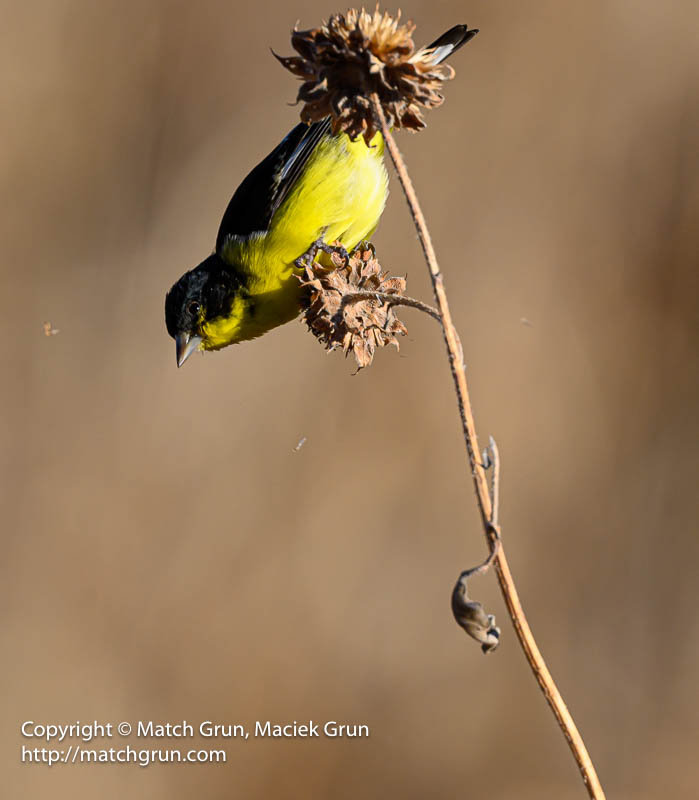
I had met several people who had mentioned that there was a pair of White-Tailed Kites in the wildlife refuge. While driving on the loop, I met a couple of photogs who had seen and captured images of one of the kites earlier in the morning. While chatting about the kites, this White-Crowned Sparrow flew by and then perched on a branch in a nearby bush.

The kite was no where to be found. Later in the day, I circled back to the north loop. The open fields were a popular location to find raptors hunting. I found this Red-Tailed Hawk perched on a tree at the roadside. It must have seen some prey and took flight to the opposite roadside. A few seconds later, it had landed in the grass, found nothing and flew off to another tree. However, I did manage to capture a couple of images as this hawk took flight from the perch.

Later that afternoon, I found another Red-Tailed Hawk perched on a tree, also on the north loop.
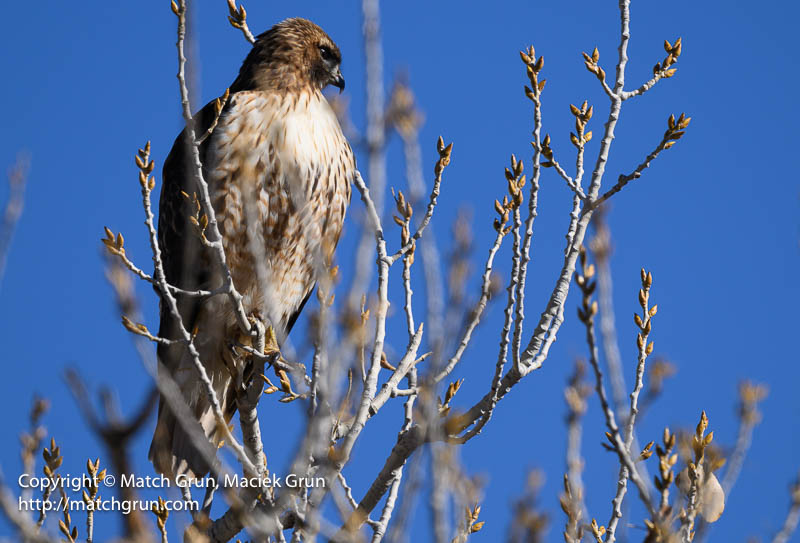
Bosque Del Apache is a well-known winter location for Sandhill Cranes and Snow Geese. This year, I did not see many Snow Geese on the first day; they had found roosting and feeding grounds at Bernado, another location about 40 miles north of Bosque. However, on this second day, I did see a flock of Snow Geese fly in during the morning.
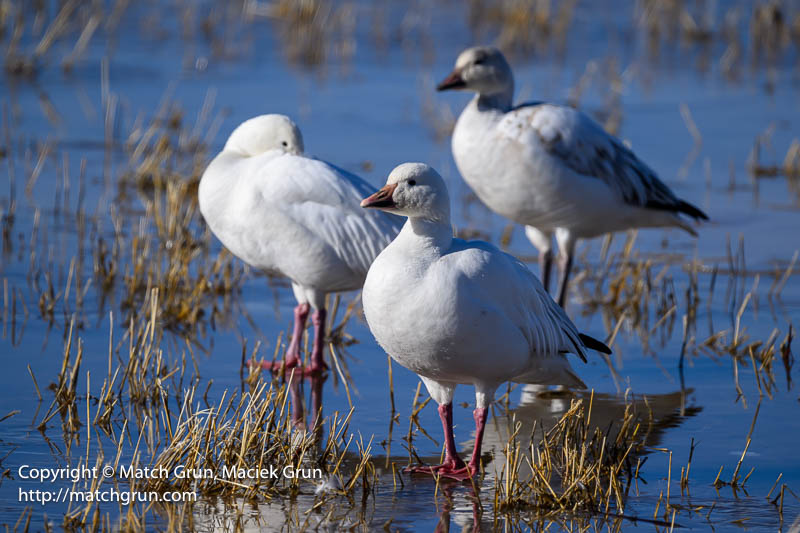
Later that afternoon, I found the flock in the refuge captured some images, including the one above and below. I have made several images in previous visits, and so I did not spend much time with this flock.
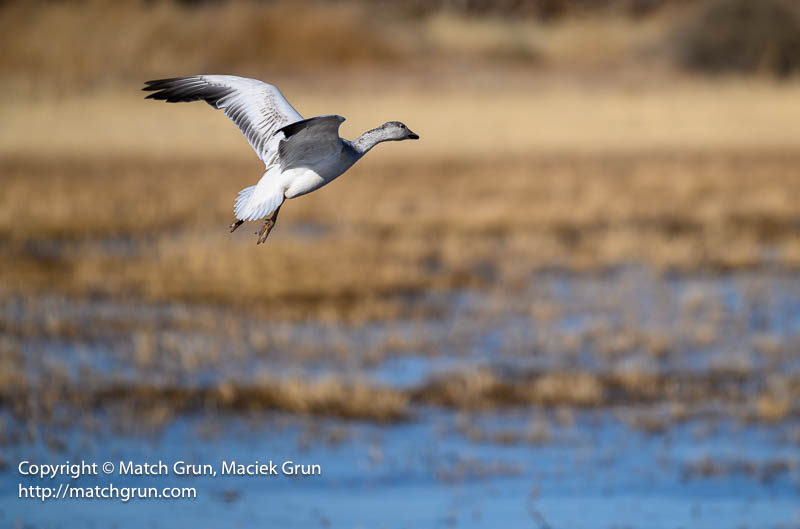
Back on the north loop, I found another Red-Tailed Hawk. I captured the following image as it took flight.
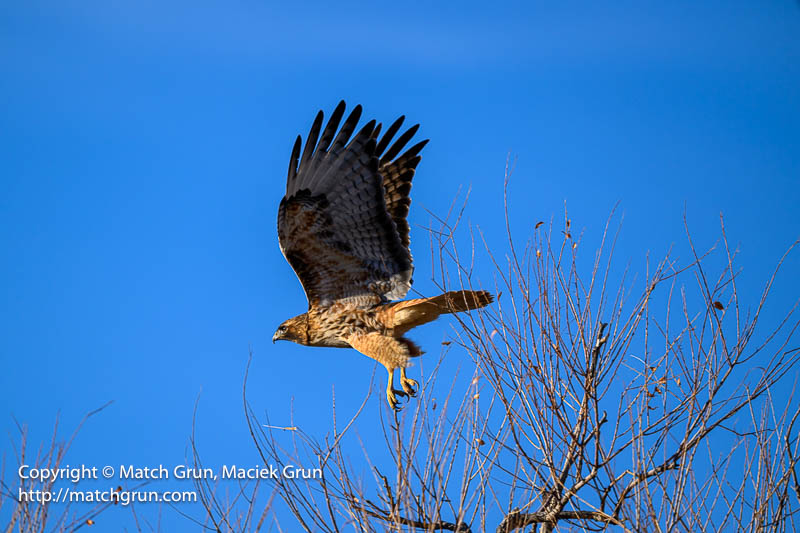
As I mentioned earlier, the Northern Harrier is an interesting bird to watch. Even more difficult to photograph successfully. This Harrier flies close to the ground looking for prey. They are highly maneuverable and will suddenly turn as something catches their attention. Very soon, their flight takes them a long way from the camera and one loses track of them! Soon they may return by a different path, maybe passing really close, so patience is good habit.
I had found a location where there were sparrows feeding among the low bushes. Pretty soon this Harrier was weaving between the trees hunting for prey. This is one image where the Harrier was close enough and not obscured by the tree branches.
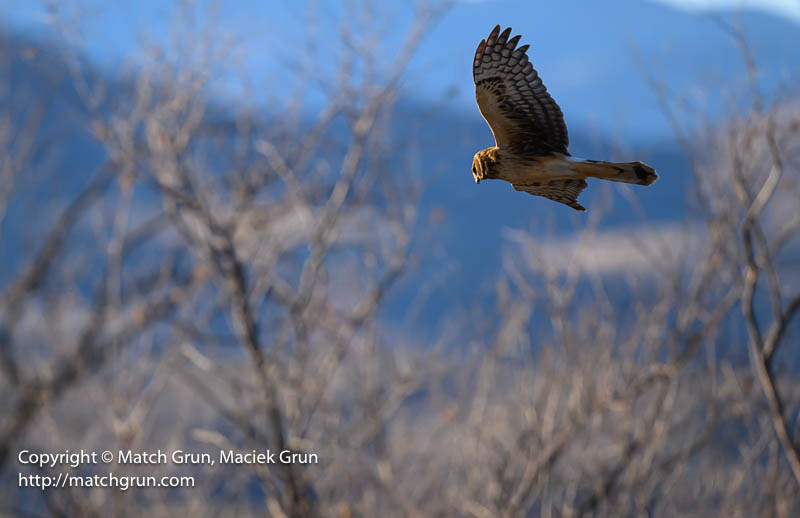
Birds in flight are the most difficult to capture, so I am happy with the results. To my mind, the Northern Harrier is the most challenging to capture, so it will keep me engaged for a long time!
